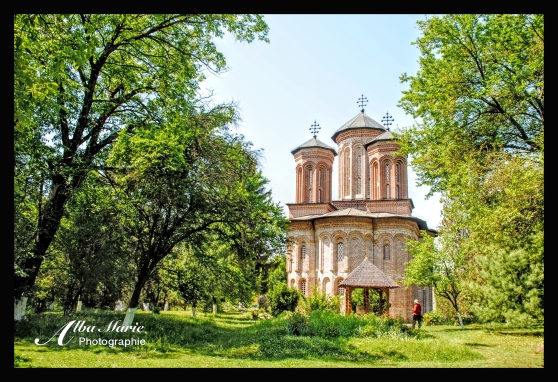Snagov Monastery, Romania
These seemingly-quiet church spires rise up through the lush gardens of the tiny Snagov Island, in the centre of a small lake of the same name. It is purported that this silent little place is actually the final resting place of Vlad Ţepeş, more commonly known by his legendary nickname, Vlad the Impaler, or even more infamous, Dracula. A personage made famous by Irish writer Bram Stoker, a scholar and writer who never stepped foot on Transylvanian soil, the vampire Dracula is based on the story of the brutal and bloodthirsty Wallachian prince, Vlad Ţepeş, who spent most of his life doing two things – one, fighting against the encroachment of the Ottoman Empire, and two, impaling people. A lot of people – hence the nickname. There has been a church on Snagov Island since the 11th century, with the monastery founded in the 14th century during the reign of King Dan I ( which was from 1383–86), and finally the construction of a stone edifice in 1453, which was later improved into the present-day structure. Supposedly the monks at Snagov were particularly partial to Vlad Dracul – in keeping with “Christian” values, Vlad helped fund the monastery in return for absolving his sins, or so the old story goes. When Dracula finally died, beheaded in 1476 while fighting his long-time enemy the Ottoman Turks, Vlad Ţepeş was interred here (well, most of him was, excepting his head which was carried on a spike back to Istanbul). Though no one knows if this is actually true or that the body here is indeed Vlad, it is true that there’s a monument to Vlad Ţepeş here at Snagov, and people come from miles around to visit the final resting place of the most famous almost-vampire in Europe.
Pro tip: Snagov is on the way from Transylvania to Bucharest. Follow the signs to the monastery through a neighbourhood where there is a car park (expect a small fee), then cross to the island via the footbridge. There are also boats across the lake if you prefer the traditional method, costing you perhaps 100 lei. At certain times of year, there are roadside vendors selling fresh produce such as strawberries – much more delicious than anything you’ll find in the supermarket!
More of Romania

